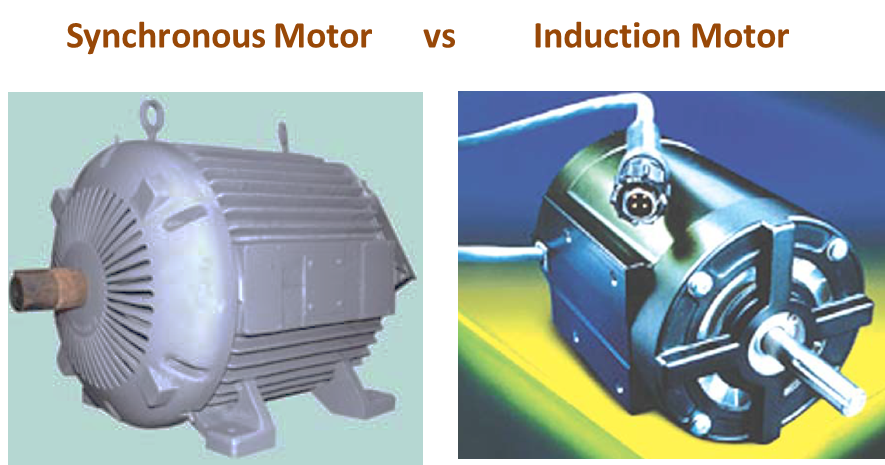In this topic, you study the difference between synchronous motor and induction motor.

The comparison between three-phase synchronous motors and induction motors is given in Tabular form
| Parameters | Synchronous Motor | Induction Motor |
| Construction | More complicated construction. | Simple construction, particularly in the case of a squirrel-cage induction motor. |
| Excitation | Motor requires d.c exciter. | No d.c. excitation required. |
| Starting | Inherently, not self-starting. | Self-starting. |
| Operation | For a given frequency, its average speed is always synchronous and independent of load. | Its speed is always less than that of synchronous and dependent to some extent on load. |
| Speed control | Speed control not possible. | Speed control possible over a limited range. |
| Power factor | By changing its excitation, the motor can be operated with a wide range of power factors, both lagging and leading. | The motor operates at only lagging power factors which become very low at light loads. Efficient control of its power factor is not possible. |
| Torque | Its torque is less sensitive to changes in supply voltage. | Its torque is more sensitive to changes in supply voltage. |
| System Disturbance | Motor is sensitive to system disturbances and sudden changes of load, and loses its synchronism under extreme conditions. | Motor is less sensitive to system disturbances and sudden changes of load. |
| Cost | Comparatively, the motor is costlier. | The motor is much cheaper. |
| Application | Employed for supplying the mechanical load as well as for power factor improvement. | Application is limited to the supply of mechanical load. |